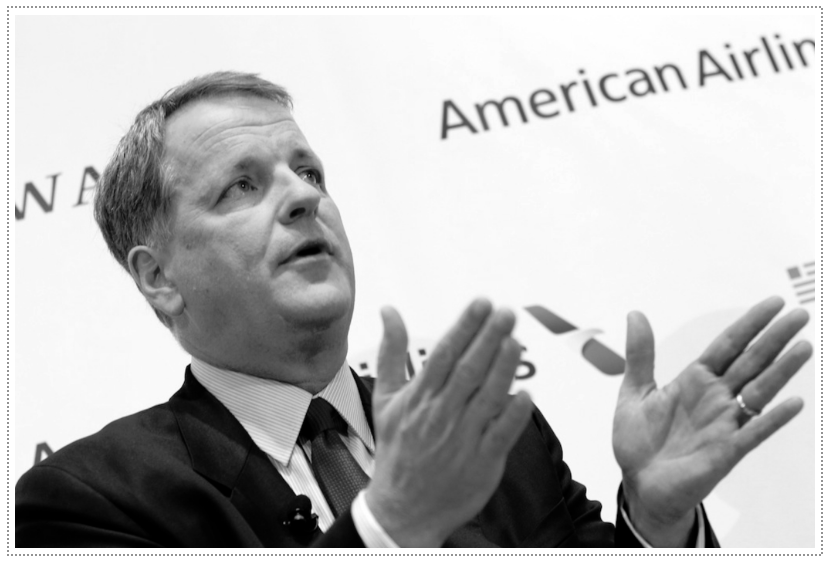At this week’s J.P. Morgan Aviation, Transportation and Industrials Conference, American Airlines chief Doug Parker spent a full 40 minutes detailing his vision for American’s future and expressing full confidence that his airline would come to be regarded as “best in class.” Implicit in his remarks, however, was the recognition that the airline currently falls well short of that goal, and that a key impediment to the company’s success is its strained relations with workers.
It was no surprise, then, that one of his dominant themes was the importance of deploying a workforce that is happy and engaged. Parker was quick to quote Herb Kelleher, Southwest’s former chief, on the relationship between employee morale and financial success: “Happy employees take care of customers; happy customers take care of shareholders by coming back.”
With that in mind, Parker vowed that American workers would be paid more than their counterparts at Delta and United. But he also acknowledged that compensation adjustments would not be enough to overcome the prevailing trust deficit. Alluding to “old world” and “new world” management styles, he promised to replace rule-based management with a judgment-based approach, that gives more autonomy and authority to workers. “The business has changed, and we must manage differently.”
RELATED: United Board in Battle for Control of Company
For all of Parker’s attention to labor harmony, and the lack thereof, he assiduously avoided any reference to the elephant in the room: the recent complaints by the airline’s pilots union that American’s service was “outright embarrassing” and its corporate culture “toxic.”
In the question-and-answer portion of the presentation, Parker rejected the notion that hidebound middle management was the problem, as alleged by the pilots. Rather, he laid the blame for the company’s labor-relations tensions on the company’s “culture.” He admitted that there was a problem in that area, but resorted to the rather vague reassurance that “We’ll get there.”
Parker was no less upbeat regarding the product side of the business, gleefully detailing the airline’s expenditures on new aircraft, airport lounges, and the like. Here the theme was differentiation—products at all price points, for all types of consumers—although the highlighted investments overwhelmingly targeted high-value passengers.
Indeed, Parker pledged to increase American’s focus on just those high-value customers, lauding the redesigned AAdvantage program, for example, as “good for our customers that spend those dollars and for the company.”
At the other end of the spending spectrum—acknowledging that 50 percent of American’s revenue was generated by budget travelers who only fly once per year—Parker reiterated the airline’s plan to roll out base fares to compete with the likes of Spirit and Frontier later this year. Just how base will the new fares be? Among other jettisoned features, “things like upgrades will not be included.”
After all the promises and rosy projections, Parker posed the question uppermost on the minds of the investors and financial analysts in attendance: Why should investors buy American stock? His answer, which many will find less than reassuring, was that it will require a leap of faith.
He has to hope a similar leap of faith is forthcoming from American’s customers and employees as well.
Reader Reality Check
Is American heading in the right direction?
After 20 years working in the travel industry, and almost that long writing about it, Tim Winship knows a thing or two about travel. Follow him on Twitter @twinship.
This article first appeared on SmarterTravel.com, where Tim Winship is Editor-at-Large.


Leave a Reply